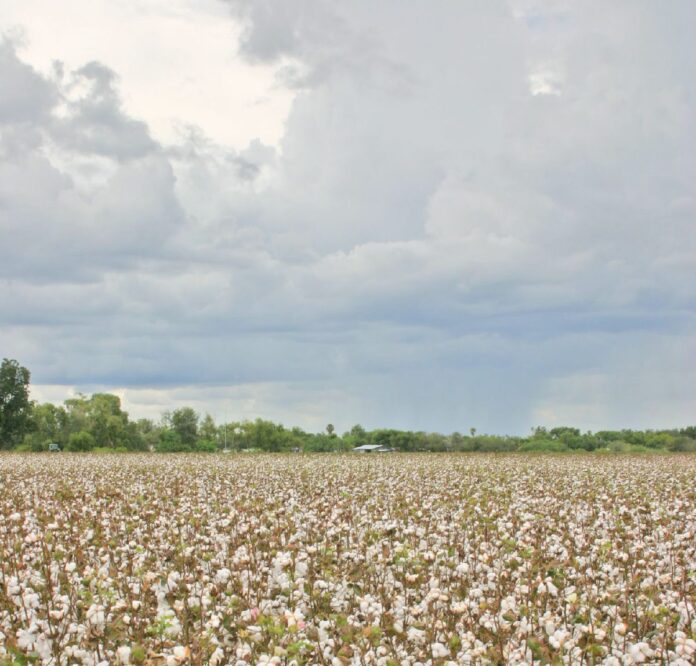BY ROD SANTA ANA III
WESLACO — The changing weather patterns that provided heat and drought relief to most of the state did not make it to the Lower Rio Grande Valley, but for now that’s just fine with cotton growers who need a few more rain-free days to wrap up this year’s harvest, experts said.
“The weather pattern that featured a persistent ‘heat dome’ of atmospheric high pressure over Texas through much of July and the first week of August broke down, at least temporarily, by mid-August,” said Barry Goldsmith, the warning coordination meteorologist at the National Weather Service in Brownsville.
“The change brought heat relief and substantial rainfall to regions of Texas including the east, southeast, central and southern parts of the state, but excluded the Rio Grande Valley,” he said.
The combination of two weather systems, including remnants of one that produced the severe flooding in Louisiana and another that moved in from the west, dumped enough rain to reduce or eliminate drought conditions over much of the state, he said.
“The two systems, which produced several inches to a foot of rain over much of Texas, largely bypassed the Rio Grande Valley where dry to moderate drought conditions are expected to persist through the last weekend of August,” Goldsmith said.
While cooler, wetter weather would likely be welcomed by most in the Valley, dry conditions are exactly what cotton growers here need, said Brad Cowan, Texas A&M AgriLife Extension Service agent in Hidalgo County.
“We got some isolated heavy showers recently that delayed some pockets of harvesting in the Valley, but overall our cotton crop is an exceptional one, and the harvest will wind up soon, given another eight to 10 rain-free days,” he said.
Growers got their wish, Goldsmith said, as high temperatures and little to no rain are expected through Sunday.
But things could change Monday, he said, with another possible wave of showers, though likely not widespread or heavy.
“My advice?” Goldsmith asked. “Pick all cotton by Sunday to be on the safe side.”
By state law, harvested cotton stalks should be destroyed by Sept. 1 to avoid fines and to eliminate overwintering sites for boll weevils, Cowan said.
“Anywhere cotton harbors weevils past Sept. 1, weevils will be a problem in those areas in next year’s cotton crops,” he said.
Barring any unforeseen tropical cyclones, the rest of the state is also likely to return to hot and dry weather beginning in September, Goldsmith said.
While Valley cotton growers will take the hot, dry weather they need, they could also use higher prices for their product, said Dr. John Robinson, an AgriLife Extension agriculture cotton economist in College Station.
After gaining some momentum recently, cotton prices have weakened.
“After trending for almost two years in the range of 60 cents per pound of lint, New York cotton futures prices recently rose over 10 cents per pound starting in mid-July, before retreating about 9 cents in mid-August,” he said.
Robinson attributes that initial price rise to the U.S. Department of Agriculture’s “more bullish forecast of world demand in the July supply/demand report,” he said. “This was followed by considerable speculative buying with the apparent view of a weather market. Prices will continue to be influenced by expectations about the effect of recent rain events in West Texas.
A weather market is a typical summer phenomena whereby expectations of changing weather conditions and supply are uncertain, resulting in unpredictable and volatile prices, Robinson said.
Rod Santa Ana III is a Texas A&M AgriLife communications specialist.




